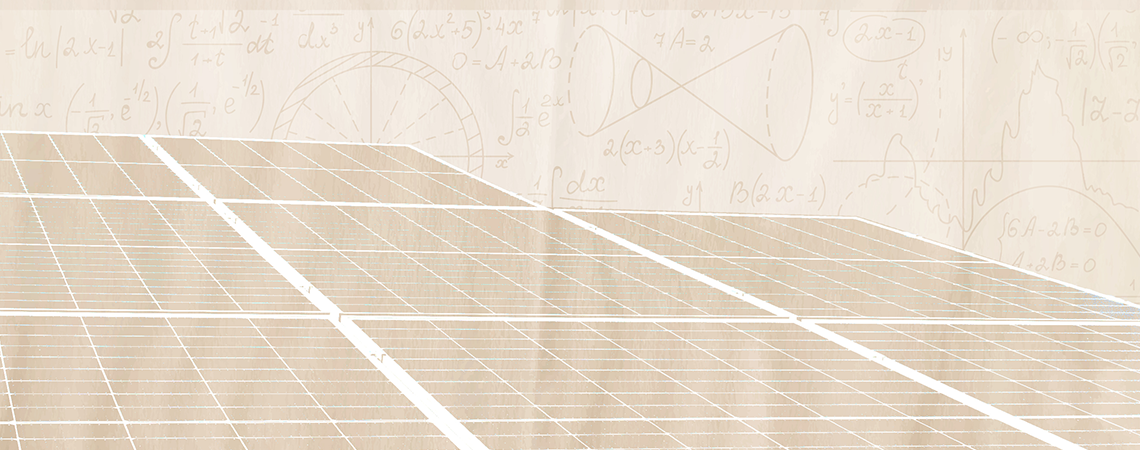Don’t stop here
There’s much more to discover!

In 1839, physicist Antoine César Becquerel discovered the photovoltaic effect, but it would take until the end of the century for the first solar cell to become operational.
In physics, the photovoltaic effect refers to the phenomenon that enables photovoltaic panels to generate energy through sunlight. Today, this process is well understood, but it is the result of observations and studies spanning at least two centuries. Discussing the history of photovoltaics also means talking about light, which took centre stage in the 19th century, across science, art, and photography.
Daguerreotype photography is a process in which light, combined with iodine vapours, imprints an image onto a copper plate. It is light taking tangible form on a plate. Daguerreotype photography transformed our world rapidly. From its widespread adoption to its gradual decline in the 1860s, roughly three decades passed, during which the world fell in love with photography.
The year 1839 is remembered as the moment when daguerreotype photography officially debuted in society, thanks to a historic presentation by scientist François Arago at the Académie des Sciences and the Académie des Beaux-Arts in Paris. The technique spread worldwide within months: in the same year, the daguerreotype was introduced in Florence and Spain, imported to America, and even used to create what is considered the first Italian photographic device in Turin. Some saw 1839 as the year that marked the end of art due to light. However, for many others - whose perspective history ultimately validated - it was the year when light forever changed the history of art, opening up unexpected horizons. It was also the year when light reshaped our understanding of energy and science.
In Paris, Antoine César Becquerel was already an internationally renowned scholar, a member of the Académie des Sciences for over a decade, and a recipient of the Copley Medal from the Royal Society, the most prestigious scientific institution of the time. Becquerel had studied at the École Polytechnique in Paris during the Napoleonic era and had witnessed the end of the Enlightenment, the early stirrings of the Industrial Revolution, and the great scientific momentum of the 19th century. Like many intellectuals of his time, he was a polymath—studying electricity, electrolysis, and batteries. He had a keen interest in magnetism (especially diamagnetism) and conducted in-depth research on the thermoelectric effect. In 1839, while observing, alongside his son Alexandre-Edmond (who would later succeed him at the Académie des Sciences), the flow of current between two metal plates immersed in a chloride solution of the same metal, he noticed that the current increased when one of the plates was exposed to sunlight while the other remained in the shade.
The results of this experiment were recorded—though only as a supplementary note - in a publication titled “On the Electrical Effects of Solar Radiation”, published in November of that year. However, Becquerel’s notes did not directly pave the way for the development of this new type of energy. In fact, the Becquerel family of physicists would go on to focus on a different form of energy: Antoine’s grandson, Henri Becquerel, would later become famous for his studies on radioactivity, which earned him the Nobel Prize.
Despite this, interest in the photovoltaic effect carved out a significant place in the science of the time. A few years after Becquerel’s discovery, a young Italian scientist, Antonio Pacinotti, already known as the inventor of the dynamo and an avid photography enthusiast, observed and studied the same effect. However, the term photoelectric effect had not yet been coined; it would only be introduced years later by another Italian scientist, Augusto Righi, a student of Pacinotti. In 1867, American scientist Willoughby Smith studied the flow of current through selenium, opening the door to the development of photovoltaics.
The history of photovoltaics advanced rapidly, with scientists and inventors worldwide contributing to its progress. In the 1870s, two British scientists, W. G. Adams and R. E. Day, scientifically demonstrated the possibility of generating electricity using a selenium bar exposed to light. This idea was brought to life by Charles Fritts, who, in 1883, created the first solid device capable of converting sunlight into electricity. Essentially, it was the first solar cell, composed of a selenium plate, a gold plate, and a copper sheet. Fritts aimed to turn this experimental device into a fully functional power generator. To achieve this, he sought the expertise of leading scientists of the time, Werner von Siemens and James Clerk Maxwell. While they acknowledged the significance of his experiment, they were unable to explain the photoelectric effect it produced. The person who would eventually succeed in doing so was still just a child in 1883, one who marvelled at his father's pocket compass and the invisible forces that moved its needle through empty space. His name was Albert Einstein.
There’s much more to discover!
Electricity generated by onshore and offshore wind farms is part of the renewable mix that supports the ongoing energy transition. History, curiosities, and technology of energy born from the wind.
Plenitude has successfully transformed the customer experience into a driver of development, benefiting both customers and the business. Here’s how.
A simple, immediate, everyday energy: just like a song that instantly gets stuck in your head. For the 75th Sanremo Festival, Eni together with Enilive and Plenitude chose to tell the story of people’s energy, starting from the sounds of daily life and a